
The older part of the city was spared major destruction during WW two, but over 50 years of neglect under Soviet Rule is still evident. Churches become warehouses, museums and dining halls. The three month tourist season provides the major income for residents. There were speciality shops selling woollen products, amber and linens. Under the Soviets about 20 per cent of the population was deported to Siberia including teachers and almost anybody with an education. Estonia is a small country of about 1,500,000 people.
Keep reading 0 comments
I own Mayan Beach Garden Inn, the closest hotel to the Southern entrance to the Sian Ka'an and I love it there, finding every excuse to visit. When we built our Inn here, I had no idea such a remote and wonderful place existed. The beaches are amazing and you can experience the opportunity to be truly alone on the beaches. Many comments above have spoken to the tragedy of the plastic on the beaches. The Southern part of the Yucatan peninsula suffers from an extraordinary amount of garbage coming up from Central and South America. By the time the currents make it to Cancun, much of it has been raked up by caretakers along the way, leaving the Sian Ka'an to fend for itself. While we can read the labels on the bottles and see that the garbage is coming from the likes of Columbia (50%), Venezuela and Honduras (25%) and the remainder from boats (including cruise ships), it is a world wide problem solved only by minimizing single use plastic. Just this week, some large ship dumped an exorbitant amount of plastic forks, lids, plastic cups and shredded pieces of styrofoam. The small pieces mixed in with the sea grass, making it all but impossible to clean up. I don't mean to be on a soap box - but the exquisite beaches in the Sian Ka'an deserve to be clean. The sea deserves to be clean and only by using less plastic can it happen. Every visit should …
Keep reading 0 comments
I have visited Alahan a number of times. I drive on the road pretty much right past it when I go from Ankara to the Meditteranean coast, which is as often as I can. Alahan sits majestically on the side of a mountain, and even the parking lot is perched somewhat precariously on it. I love walking around the ruins and taking note of all the carvings and details that Alahan holds. I have never run into other tourists there, and the guard doesn't even stay there since there are so few visitors. I do believe it should be inscribed. It's gorgeous. You can read more about Alahan at my website: http://rovingvails.com/blog/2009/11/04/352/.
Keep reading 0 comments
Twyfelfontein is not just a mega of rock arts(Engraving) its a holyritualg round of the hunter gathers who lived during that time.The side was use for various reason as a initiation place,ritual cermonies would take place there as the area is encave and the anscetral spirits would be kept in the enclosure for trance rituals take be more successfull compare to the surrounding.The side manifest the realm of african wisdom and way of cultural recording this shows us the different way of communication our anscester had.Young boys will be teach the diffent kinds of animals found in the area,their foodprint and it will be added with oral history about the hunding and gathering methods of the specific community.For me there is no clear tourism policy to controll tourism in the area and this may in the future have negative impacct on the rock art and the lanscape.
Keep reading 0 comments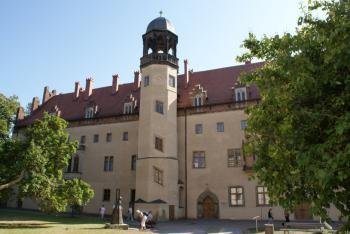
The sites in Wittenberg and Eisleben were inscribed for their connection to the life and work of Martin Luther and to the ideas of the Reformation rather than for the outstanding value of the monuments. I visited both towns in summer 2009. Both are medieval towns like many others in Central Europe, nothing special. Strangely enough, Eisleben was almost deserted, while Wittenberg was crowded with tourists, mainly from Japan and China. Probably they want to see all this famous door of the Schlosskirche. However, this is not the original from 1517, just like many of the other Luther Memorials that have been destroyed and rebuilt over the centuries. Wittenberg I liked better than Eisleben. I enjoyed the walk from the Schlosskirche to the Luther House passing the main square and the worth seeing Stadtkirche. The Luther House (photo), his former residence, now houses a museum on the history of the Protestant Reformation, which is certainly fascinating when one is interested in this part of history. The Luther Memorials are not my preferred kind of WHS. So I took it as a stopover between the visits of two of my favourite WHS in Germany, the Bauhaus Dessau and Classical Weimar.
Keep reading 0 comments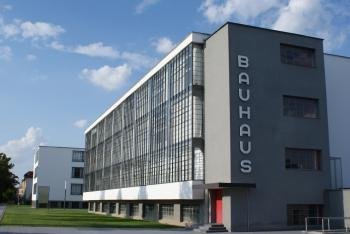
The impact of the Bauhaus on modern architecture and design is undoubtedly immense. Everyone can find traces of these ideas in his everyday live: buildings, furniture and objects of daily use. Although the Bauhaus School was founded in Weimar in 1919, the building in Dessau (photo) designed by Walter Gropius is the symbol of the Bauhaus idea: the unity of art and technology based on function. The glass curtain walls are striking, Gropius has used this element for the first time at the Fagus Factory. I would recommend to take a guided tour, even though they are in German language. The tour takes you through many parts of the building that are not open to individual visitors: the auditorium, the cafeteria, the director's office, a student flat. Everywhere you can see examples (such as door handles, furniture, lamps) that the interior design follows the same principles as the architecture.
The Masters' Houses are just a few minutes away from the school building and well worth a visit. After the move from Weimar to Dessau, Gropius designed three twin-houses for the Bauhaus masters and a single house for the director himself. Although the houses are constructed from the same basic elements, the interiors were designed differently according to the tastes of the residents. The house of Gropius and one half of a Master's House were destroyed in the WWII. In 2011/2012, both buildings are going to be reconstructed in their original form.
There are other examples of the Bauhaus architecture in …
Keep reading 0 comments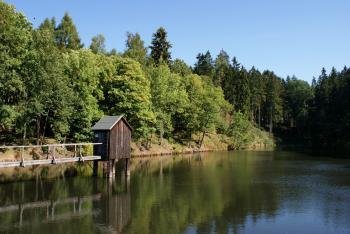
This WHS consists of three parts: the Historic Town of Goslar, the Mines of Rammelsberg and the Upper Harz Water Management. Goslar and Rammelsberg are well described by the previous reviews, so I will focus on the extension in 2010. The Upper Harz Water Management is a sophisticated water distribution system, which was used in the 16th to 19th Century by the miners to drive pumps and water wheels. A major problem for the miners was the infiltration of water into the shafts and tunnels. Hydro power was used to remove it: “raising water with water” was the principle. The first ponds and dams have been built 800 years ago by monks (Abbey Walkenried is also part of the WHS). Today, more than 60 ponds, many dams, and kilometres of ditches and water tunnels are still visible.
The area extends over about 200 square kilometres south of Goslar, most of the ponds are around the town of Clausthal-Zellerfeld. There I bought a hiking map and chose some places that seemed to be the most interesting. I was travelling by car, so it was easy to get there. In the village Bockswiese, I hiked along four ponds on different levels that were connected by historical ditches. Other nice places are the “Carler Teich” (Carl Pond, west of Zellerfeld) and the “Pfauenteiche” (Peacock Ponds, south east of Clausthal). The "Carler Teich" is one of the few ponds where the so-called “Striegelhaus” has been preserved until today (photo). These small huts were connected …
Keep reading 0 comments
After having visited all Dutch Tentative Sites on European soil, I believe that this is the strongest proposal. Its subject, astronomy explained to the general public, is pretty unique. Also, it can fill a gap in the List as the history of science is currently deemed underrepresented. Especially the long regional and cultural tradition of the 'lay scholar' is praised here.
The Planetarium lies in the Frisian town of Franeker. This is a prominent city in the history of the Netherlands: it held the second oldest university. It has a marvellous city hall for example, and many other fine old buildings.
Eise Eisinga was an autodidact who built this small Planetarium or Orrery in 1781. It is the oldest of its kind that still works. He constructed his model of the galaxy on the ceiling of his living room. It is a sky-blue wooden structure, with moving elements steared by an intricate mechanical clockwork structure on the attic above. He received a lot of visitors in his time who came to see this, both prominents and schoolchildren.
His former house now is a little museum. The entrance fee is 4.5 EUR. A fifteen minute explanation of the structure is included. It's really fascinating to see how it all works: how the planets move relative to each other, but also what time it is, which date, which year. Eisinga also left behind an entire manual about how it all functions, including instructions for future caretakers.
Keep reading 0 commentsFrederik Dawson
Seokguram Grotto and Bulguksa Temple
Seokguram Grotto and Bulguksa Temple (Inscribed)
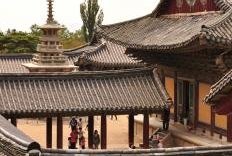
This review is made after my second visit to one of most outstanding temples in South Korea, Bulguksa Temple and its nearby Seokguram Grotto which in my opinion one of the must-see World Heritage Site in this country. I still remember my first visit in late spring 2008, Mount Tohamsan, where the temple complex is located, was in full bloom of spring color with hundreds of paper lantern decorating for the upcoming Lord Buddha's Birthday festival. I visited Seokguram by taxi from the city of Gyeongju, the tiny grotto was very popular for tourists, and I had to queue to see the famous Buddha statue. The statue claimed to be the best for Korean art, but it was behind the glass scene with some bad light reflection, so hardly to admire this great work.
After Seokguram I decided to hike down to Bulguksa Temple, the hiking path was lovely, highly recommended, the forest was full of maple trees, the autumn must be very gorgeous, I even told my friend that one day I want to come back to see autumn foliage at Bulguksa Temple. When I reached the temple, which is considered as one of the three most important temple in the country representing the Lord Buddha, I was quite shocked to see hundreds of tourists in the temple, I hardly had time to appreciate the temple, that why I much preferred Haeinsa, another WHS temple of Korea.
But in late summer 2011, I had a chance …
Keep reading 0 comments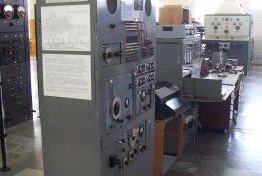
From looking at the positive reviews from some of my most trusted commentators on this site, I already knew that this was going to be a little more interesting than it first sounded. What I found certainly reinforced the reviews below and I found this to be a real gem of a WHS.
The site comprises of the radio station building and the long field of antennas stretching for 2km westwards. I actually got a good view of these towers the day before as I drove on the main road south, and from the fortress in Varberg proper, they looked pretty impressive and mixed in well with the rather beautiful wind turbines that lined all of the E6 that I drove on.
The presentation at the site was impeccable; the new visitors centre was a rather beautiful modernist cube, with lots of information and World Heritage themed goodies. The guided tour was pitched really well, it was thankfully was not exceedingly long. This meant that it did not get bogged down in the functioning of the machinery, which is important and interesting to some, but as a casual tourist I was glad it was kept to the basics.
One thing that really impressed me was how the importance of the machines was highlighted. Standing in front of a contraption that sent the signal out to the masts, the tour guide explained how this mechanism was run almost non-stop in the early years of the radio station. It pumped out Morse …
Keep reading 0 comments
I visited the Cologne Cathedral,in July of 2002. This church left such an amazing impression on me, and does to this day. I think it shoud be one of the wonders of the world. To start to build something of this size back in the 12th century with no machinery (as we kndow today) is very fascinating. I would like to return one day, God willing,and spend more time taking in all its wonders.
Keep reading 0 comments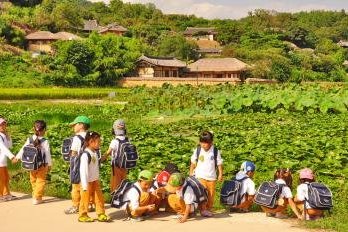
During my short trip to South Korea, I have a chance to revisit Gyeongju and its two UNESCO protected sites, Bulguksa Temple and Gyeongju Tumuli Park; however my true highlight was a visit to Yangdong, a small village outside the city of Gyeongju, together with Hohoe became the third world heritage site of Gyeongsangbuk-do Province, one of the cultural hotspot of this country. By a nice direct bus no. 203 from the Sin-Gyeongju Train Station or the central bus terminal, I was in Yangdong within 40 minutes. The first thing I saw was the large parking zone, with five tourist buses, clearly Yangdong was already being on tourist itinerary.
The village itself is beautiful with many lovely thatched roof houses, paddy rice fields, lotus ponds and blooming flower, one of the prettiest places in Korea. Strolling around the village is a thing to do, as the village has unique characteristic as the tiled roof house of the ruling class will be on the top of the hill, while the lower class thatched roof houses are built on the ground below; however most of the houses are still occupied by local people, few are opened for sightseers, but I loved these things, the village is still a living place, not a fake traditional villages which Korea has a lot and also Yangdong does not have ticket for entrance yet.
I don’t know what will happen with Yangdong in the near future, the site has potential to become a new …
Keep reading 0 comments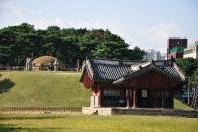
During my conference trip to Seoul and Gyeongju, South Korea, I had managed to visit Royal Tombs of the Joseon Dynasty, one of the most complete dynastic tombs in Asia, which located around the city and nearby provinces. From all tombs, I decided to visit two clusters, Seonjeongneung, better known as Seolleung in Southern Seoul, and another at Taereung in Northeastern Seoul. The reasons why I chose these two sites because of both has museum and interpretive center for tourists as well as easy connection with subway.
The tombs are located inside the beautiful forest parks, the surroundings are well kept with fantastic green lawn; however from my experience the tombs are hard to appreciate, as the sites are off-limited, few chance to see the details of stone decoration, but the museum and interpretive center can help with computer graphic show how to construct the tombs, and most important, the royal funeral ceremony as well as full size replica of stone decorations.
In my opinion, the Joseon Tombs cannot be considered as a unique site, compared with Silla Tombs in Gyeongju, the latter are more interesting with treasure discovered and tumuli construction technique. Also, most of the ancient tombs in East Asia, noble or normal people, are constructed under Fengshui doctrine. In ICOMOS report, I was surprised that ICOMOS and Korea use Chinese Imperial Tombs for comparative study as Emperor (huangdi) and King (Wang or Taewang) is totally different in tomb size and status. To be fair, …
Keep reading 0 comments
Those who travel to Mantua by car, should definitely take the SS10 from the east. The first view of the city “skyline” is overwhelming. From this perspective, the buildings are perfectly arranged: the Palazzo Ducale, the Castello San Giogio and the church towers. The city is surrounded on three sides by artificial lakes, which formerly served as a defence system and now contribute to the special flair of the city.
We enjoyed it a lot to stroll through the historic centre. The main sights are located on three contiguous squares. The main square, the Piazza Sordello, is dominated by the Palazzo Ducale, a huge complex, which consists of several buildings with courtyards, gardens and connecting corridors. It is virtually a small city in itself. Parts of the palace can be visited, the most impressive room is the Camera degli Sposi with frescoes by Andrea Mantegna. Another highlight was the Basilica Sant'Andrea. We were extremely impressed, although the interior was under renovation and the nave was partially hidden by scaffolding (our visit was in August 2011). In the transept and the apse the restoration was already completed, so we could see the effects of the restoration in comparison to the parts not yet renewed. It will look magnificient when everything is finished.
We spent two hot summer days and nights in Mantua. The restaurants and cafés were full with tourists and locals until late in the evening, it was very atmospheric. Exactly what you would expect from the summer in an …
Keep reading 0 comments
The Van Nelle Factory is the number 1 landmark of the Modern Movement in Architecture in the Netherlands. It is located in Rotterdam and was built between 1925 and 1931. The factory used to produce tea, coffee, and tobacco. Its huge floor space is now rented out to offices.
I visited it on Open Monuments Day 2011 (September 10th). During the rest of the year, it is pretty difficult to get in, except when you're prepared to fork out 100 EUR for an exclusive group tour. The factory complex is very large. Nowadays it is only one of many industrial buildings at this location. But when it was constructed, it occupied a large spot in a pristine polder landscape. There was plenty of space for the architects to deliver all their ideas, including sports fields and a garden for the factory workers.
Architecture students guide the tours around the complex. A group of about 20 interested persons had already shown up a little after 10 in the morning. Among them there even was a fellow world heritage spotter, Peter, who was so clever to recognize me!
The first part of the tour covered the outside of the complex. Here the sky bridges are the main focus of attention. They were used to transport the products between factory and storage facilities. Their sharp lines are visually very attractive. Another notable exterior feature is the display of the name 'Van Nelle' - a clever way of advertising the brand …
Keep reading 0 comments
As a US expat living in Brno, CZ and working in Europe for the last five years, I took exception to the review and characterization of the City of Brno by the author of the article. The author unfortunately did not take the time to explore and really "taste" the culture and history of the City of Brno and it's people. In fact, it is clear to me the author spent very little time outside his/her hotel and speaking to the locals or looking for the history that was part of the charm and glory of Brno during it's days up until the mid 1930s when the city still bustled with culture and prosperity as part of the Austo-Hungarian Empire. The city suffered until the 1990s with the lack of investment before the Velvet Revolution.
This said, there is a huge amount of history and culture to be found walking it's streets and surrounding areas. There are castles (Hrad Špilberk & Hrad Veveøi), parks, threatres (open-air summer Shakespearian performances), historic Napoleonic battlefields (Slavkov-Austerlitz), firework festivals (Ignis Brunensis), Undergroud Caves with amazing Stalactites(Punkevní jeskynì),(a world class brewery (Staro Brno), Aquatic Centers not to mention the wonderful Moravian food and drink (Don't miss the Pork Ribs - Žebra and Potato pancakes - Bramboráky)that are enjoyed around the year in festivals and the local restaurants.
On a final note, if you go to Brno or any foreign country for that matter, realize that you are in a foreign culture and one with it's …
Keep reading 0 comments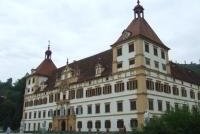
Because there is so much to see in this city I set out early heading first for the Schlossberg for an overview. I too the lift to the Uhrturm an excellent viewpoint. I then walked up to the bell tower before decending by funicular.
From there I walked to the Hauptplatz to see the decorated buildings along the Herrengasse. I particularly liked the courtyard of the Landzeughaus, but was disturbed to find portraits of Hitler and Mussolini in stained glass in the parish church.
I found the trams of Graz very easy to navigate, and travelled by tram #1 to Schloss Eggenburg on the edge of the city. The palace was interesting, but the peacocks strutting around outside I found more entertaining.
Back in the city centre again I enjoyed visiting the cathedral, Burg, and Mariahilferplatz as well as the food stalls in Jacominplatz.
Keep reading 0 comments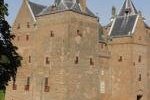
The "Nieuwe Hollandse Waterlinie" (New Dutch Defence Line) is on the (old and new) Tentative List as an extension to the Defence Line of Amsterdam. It is also a Defence Line based on inundation. At the north, it hooks up with the Defence Line of Amsterdam near Muiden. This Defence Line (1871) was developed to replace an older one that had been protecting parts of Holland. It incorporated the defence of the city of Utrecht. It is 85km long and still very visible and in good shape.
I visited a fortress at the southern edge of this Line: Loevestein. It encloses a castle that is well known in Dutch history: it is from here that the legendary escape of the imprisoned jurist Hugo Grotius inside a book case took place.
The fortress/castle lies in a very pleasant recreation area, especially on a sunny day like this. It sits on a strategic position at two main rivers, the Meuse and Waal. The castle is enclosed by a moat, then by the fortress and another moat. It attracts quite a lot of visitors, and I noticed that it is popular with foreign tourists too. It really is a peculiar construction, such a great defence work relying totally on the force of water. It often suffered from floodings itself too. The castle is made of connected tower houses and has only a tiny courtyard.
The area around it is now a protected landscape. There are bike paths and hiking trails. A good place …
Keep reading 0 comments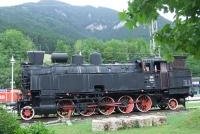
Besides the feats of engineering and of nature that make this railway spectacular, I enjoyed visiting the exhibits arranged at stations along the route. There were the photographic exhibitions at Glognitz and Murzzuschlag. At Payerbach-Reichenau there was an original steam locomotive and other memorabilia. At Semmering there was an indoor exhibition of the construction process and a model, and outdoor exhibits as well as a memorial to Carl Ritter von Ghega.
Keep reading 0 comments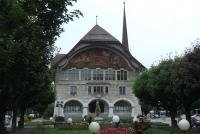
On arriving in La Chaux de Fond I went to the horological information centre at rue Jaquet-Droz 23. Here I sawa short film about La Chaux's role in history of watchmaking. I also received detailed information for a self-guided tour not only of La Chaux but also Le Locle.
So after a couple of hours walking the streets and seeing a variety of relevant buildings I returned to the station and took a train to Le Locle. This town is smaller but seemed to be more interesting and picturesque than its larger neighbour.
I travelled to La Chaux by train from Biel. Trains also travel from Neuchatel and continue to Le Locle. Both routes afford scenic views of lakes and mountains.
Keep reading 0 comments